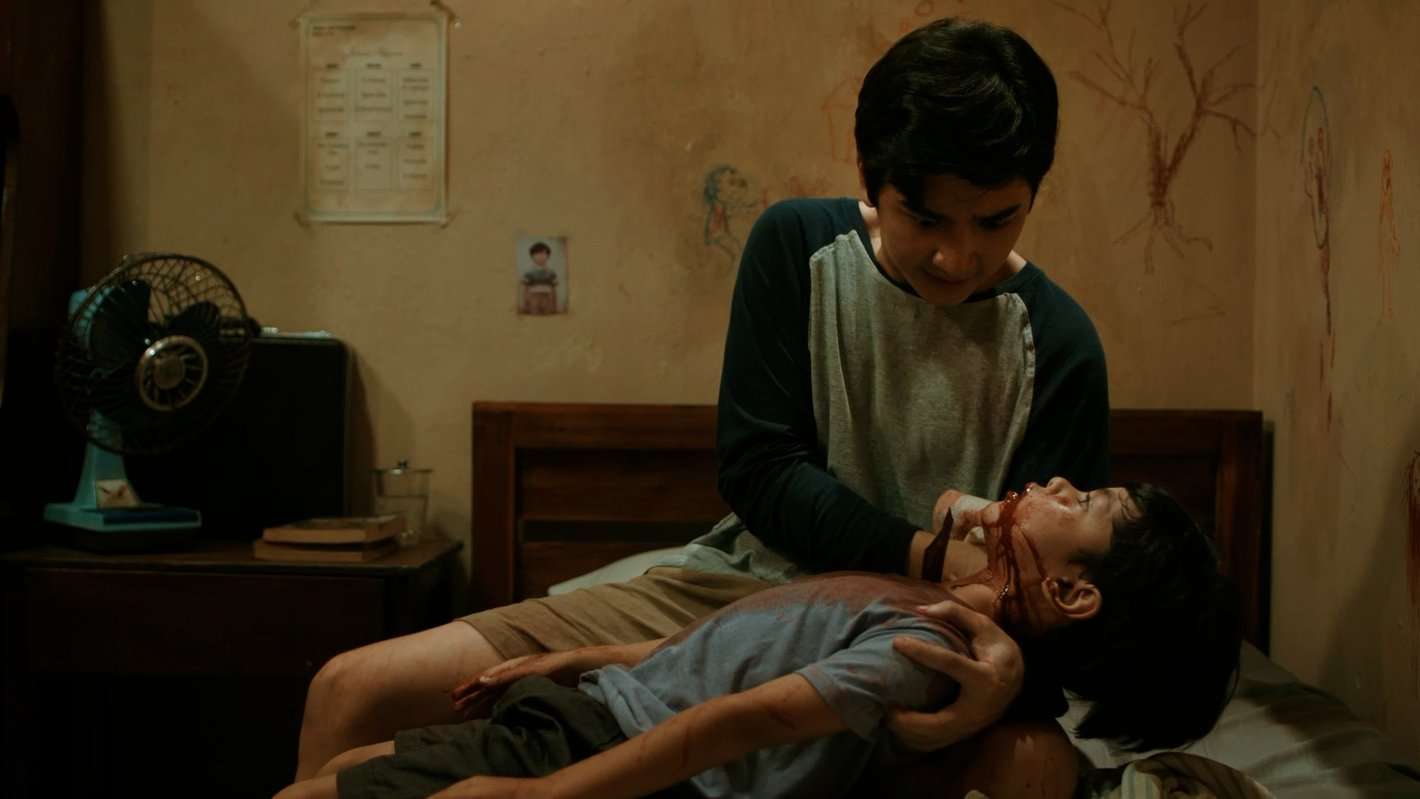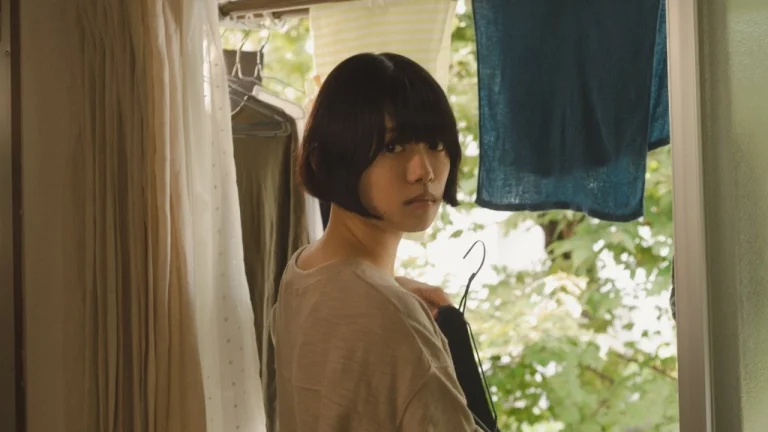Tommy Dewo’s “Curse of the Seven Oceans” (Original title: Santet Segoro Pitu, 2024) joins the ranks of scores and scores of Indonesian horror that invariably and inevitably succeed in being pure, unintentional comedy in its atrocious treatment. There’s not a scare in sight, instead a gallery of ridiculous, patchy, unbearable prosthetics, a series of clumsy sequences designed to evoke awed terror but only eliciting exasperation.
What’s worse is the film goes on for as long as ninety minutes; it’s a trial to sit through repetitive scenes of mutilation, impaling, wrapped up in high grotesquery, every bit of it increasingly ludicrous and outrageously inane. Several times throughout, you’ll catch yourself marvelling at the sheer stupidity on display, the bunch of characters lacking any dimension in this story of a family’s unravelling, losses escalating beyond understanding, yet no emotional edge comes through.
Curse of the Seven Oceans (Santet Segoro Pitu, 2024) Plot Summary & Movie Synopsis:
The film opens in 1970 in Semarang, Indonesia. Sucipto has a thriving shop at the market. But when his and Marni’s eldest child, Ardi, gets strange visions that make him see spirits, hell breaks loose. His parents scramble to find a cure, a solution that can fix it all for Ardi. It’s a situation of deep churn, instability. His father contacts a spiritual healer, Rustam, who asserts Ardi is gifted with the third eye. He can, therefore, see the invisible. What Rustam proposes is that he not close Ardi’s eye, but narrow down the vision. So, only the spirits that want to be seen to him can appear before Ardi.
The film then jumps thirteen years later. Ardi is now in college. The visions don’t seem to bother him any longer. He’s forbidden to go to the market, where the healer holds forth, a lot of nefarious deals are struck. The market is where black magic is stoked, to whet avarice since there’s the constant pressure of outdoing one’s rivals.
One day, Sucipto sees a black magic bundle on the street. He’s curious but ultimately hurls it away and returns home. However, that night itself, things start going horribly wrong. He falls terribly sick and is bedridden. The doctors say he has chronic brain dysfunction. The family becomes furthermore up-ended when the youngest child, Arif, is attacked by a spirit. He is left viciously mutilated and dies.
Too much happens quickly. Yet the action is so vague, details vacuous and direly wanting, nothing really feels effective, or moving as it should be. There’s only a good deal of hand-wringing, people wailing and anguished over mounting losses and mortal threats while circumstances exacerbate beyond recognition.
Who’s behind the curse?

The son suspects his uncle, Sardi, to be behind the family’s ruin. Sardi’s business has been floundering, while Sucipto’s a raging success. So, envy must be existing, Ardi suspects. The screenplay is too thin, sketchy to make us feel any shred of emotion in the long litany of quick events rolling out with barbarity and agony.
For the misjudgement, greed and mistakes of the father, the entire family is shattered. The children have to undo the damage. There’s so much they have to do. But first there’s a whole deal of confusion and devastating uncertainty they have to battle. They don’t know what the way out is; it could also be argued the son doesn’t want to invoke the shamans knowing the powers they wield and how swiftly things could head south, get messy and real ugly.
This conscious blinding of oneself from the escalating possibilities wreaks a lot of havoc. It’s then the uncle discloses the real linkage of their family to black magic. Back in 1970, when Ardi’s father’s shop was dwindling, Sucipto resorted to black magic to lure customers. Sardi had warned him to ignore all the totems left outside the shop. However, Sucipto eventually enlisted the help of a shaman, Mbap, who revived his business with powerful charms.
A rival shopkeeper, Wicak, got hold of a more powerful shaman whose spell made Sucipto’s wife sick for a while. When Sucipto decided to take revenge against the man, it was the latter’s daughter who became the sorry victim, dying. Since then, Wicak is avenging the death of his daughter, summoning a faraway evil spirit Suanggi to do his bidding.
Curse of the Seven Oceans (Santet Segoro Pitu, 2024) Movie Ending Explained:
Does the curse on the family lift?
Rustam informs the siblings specifics of the ritual that can drive away the evil spirit and protect the family for the rest of their lives. The task is long, arduous and demanding, requiring fearlessness and bullish tenacity. Ardi and his sister, Syifa, have to complete the purification ritual of ruwat — water has to be collected from the seven beach points where Wicak and the shaman conjured their black magic. The siblings hurry through this task, scampering through the many beaches. At every point, they have to face off spirits that pop up. Rustam has opened up both their third eyes so that they can inhabit the invisible realm and complete the process with rigour and precision.
This climax is a frenzied run-through, disorienting and whose velocity is as simple, uncomplicated and repetitive as it can get. The film slumps into a slog furthermore and where there could have been spice of new threats, an opportunity to weave in a fresh menace, the awful CGI plays kaput, depleting any desired effect of terror and of being overwhelmed. There are too many missed opportunities here.
As the siblings get back to their house, completing the task, with the water in hand, they find both Rustam and their uncle dead, killed by the spirit. Somehow, in a scuffle, the siblings manage to quell Suanggi, dousing it with the water. The spirit goes up in flames, vanquished and the curse over their house lifts. Their father recovers at last. Mbah, Sucipto’s hired shaman, also recovers. Having seen the immense damage his greed brought on his family, he urges Mbah to take away any trace of black magic from his shop. The film closes with Mbah, doing a brief ritual to expel the spirit. There’s the promise of relief in the closing note.









